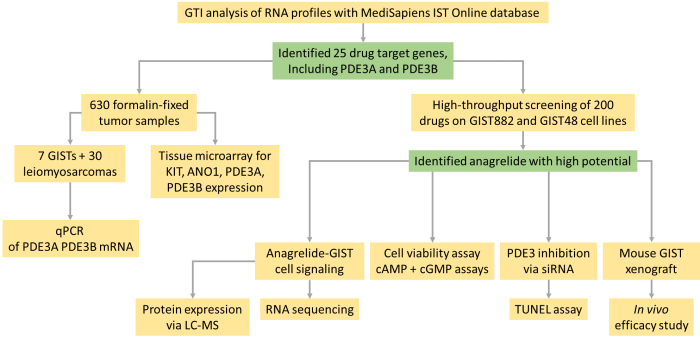メニュー
JP | JPY
-
-
-
- Challenges and Chances: A Review of the 1st Stem Cell Community Day
- Summertime, and the Livin’ Is Easy…
- Follow-on-Biologics – More than Simple Generics
- Bacteria Versus Body Cells: A 1:1 Tie
- Behind the Crime Scene: How Biological Traces Can Help to Convict Offenders
- Every 3 Seconds Someone in the World Is Affected by Alzheimer's
- HIV – It’s Still Not Under Control…
- How Many Will Be Convicted This Time?
- Malaria – the Battle is Not Lost
- Physicians on Standby: The Annual Flu Season Can Be Serious
- At the Forefront in Fighting Cancer
- Molecular Motors: Think Small and yet Smaller Again…
- Liquid Biopsy: Novel Methods May Ease Cancer Detection and Therapy
- They Are Invisible, Sneaky and Disgusting – But Today It’s Their Special Day!
- How Many Cells Are in Your Body? Probably More Than You Think!
- What You Need to Know about Antibiotic Resistance – Findings, Facts and Good Intentions
- Why Do Old Men Have Big Ears?
- The Condemned Live Longer: A Potential Paradigm Shift in Genetics
- From Research to Commerce
- Chronobiology – How the Cold Seasons Influence Our Biorhythms
- Taskforce Microbots: Targeted Treatment from Inside the Body
- Eyes on Cancer Therapy
-
-
-
-
-
- Challenges and Chances: A Review of the 1st Stem Cell Community Day
- Summertime, and the Livin’ Is Easy…
- Follow-on-Biologics – More than Simple Generics
- Bacteria Versus Body Cells: A 1:1 Tie
- Behind the Crime Scene: How Biological Traces Can Help to Convict Offenders
- Every 3 Seconds Someone in the World Is Affected by Alzheimer's
- HIV – It’s Still Not Under Control…
- How Many Will Be Convicted This Time?
- Malaria – the Battle is Not Lost
- Physicians on Standby: The Annual Flu Season Can Be Serious
- At the Forefront in Fighting Cancer
- Molecular Motors: Think Small and yet Smaller Again…
- Liquid Biopsy: Novel Methods May Ease Cancer Detection and Therapy
- They Are Invisible, Sneaky and Disgusting – But Today It’s Their Special Day!
- How Many Cells Are in Your Body? Probably More Than You Think!
- What You Need to Know about Antibiotic Resistance – Findings, Facts and Good Intentions
- Why Do Old Men Have Big Ears?
- The Condemned Live Longer: A Potential Paradigm Shift in Genetics
- From Research to Commerce
- Chronobiology – How the Cold Seasons Influence Our Biorhythms
- Taskforce Microbots: Targeted Treatment from Inside the Body
- Eyes on Cancer Therapy
-
-
JP | JPY
Sorry, we couldn't find anything on our website containing your search term.

From Research to Commerce - The story behind novel therapeutic development
生命科学の探究
- 実験室の日常
- エッセー
- 医療
The line between academia and commerce has blurred tremendously over the past few years. Not only do big companies actively invest in university groups to help accelerate the speed of research and developments, many research groups worldwide have begun to seek a path for commercializing their findings.
Sartar Therapeutics Ltd is one of the companies we interviewed recently with such a story. The invention was bred on the ground of University of Helsinki, which the group then founded the company to take it further. The company is working on novel targeted therapy for gastrointestinal stromal tumors (GIST), and is committed to delivering an innovative, therapeutic option for the patients who have run out of therapy options. And below is their story…
GIST is a common type of soft tissue sarcoma with known studies and existing treatment – as far as everything goes well. Unfortunately, GIST patients often harbor secondary mutations that confer drug resistance to currently approved drugs. For example, the majority of Glivec®*-treated tumors acquire resistance to Glivec® and only about 15-20% of Glivec®-treated tumors don’t recur during the 10 years follow-up. This critically limits the effectiveness of even third-line agents for advanced GIST and was the motivation behind the study published recently by O.P.Pulkka et. al. (Dec 2018) in Clinical Cancer Research [1].
Using combinations of key technologies, the study managed to identify new drug targets, as well as a potential drug with high efficacy that was further substantiated by both in vitro and in vivo studies.
The study began with gene expression profiling via gene tissue index (GTI) analysis of GIST samples against other tissues in MediSapiens IST Online database. The result not only provided a list of top 25 outliers drug target genes, of which some are well known, but also revealed some new targets such as the phosphodiesterase 3 genes (PDE3A and PDE3B). Protein expression via tissue microarray and qPCR analyses of the PDE3A and PDE3B were confirmed on tumor samples from the archives of Helsinki University Hospital.
Next, high-throughput drug screening of 200 approved and investigational anti-cancer compounds were performed using GIST cell lines (GIST882 and GIST48) to assess the drug sensitivity and resistance of these compounds. When the drug response profiles were compared to the expression of the previously identified 25 target genes, anagrelide, a known PDE3 inhibitor drug typically used for treatment of essential thrombocytosis (overproduction of blood platelets), was shown to reduce the viability of GIST882 cells.
Hence, further studies were done to investigate the effects of anagrelide. The cell viability, intracellular cAMP and cGMP levels of GIST cell lines were measured, and the effect of PDE3 inhibition was investigated using small interfering RNAs via TUNEL assay after transfection. Furthermore, the effect of anagrelide on GIST cell signaling pathways were investigated by way of both RNA sequencing of miRNA and mRNA expression of the cell lines, as well as their protein expression via label-free liquid chromatography-mass spectrometry. Finally, patient-derived mouse GIST xenograft models were established to study the in vivo efficacy of anagrelide.
GIST is a common type of soft tissue sarcoma with known studies and existing treatment – as far as everything goes well. Unfortunately, GIST patients often harbor secondary mutations that confer drug resistance to currently approved drugs. For example, the majority of Glivec®*-treated tumors acquire resistance to Glivec® and only about 15-20% of Glivec®-treated tumors don’t recur during the 10 years follow-up. This critically limits the effectiveness of even third-line agents for advanced GIST and was the motivation behind the study published recently by O.P.Pulkka et. al. (Dec 2018) in Clinical Cancer Research [1].
Using combinations of key technologies, the study managed to identify new drug targets, as well as a potential drug with high efficacy that was further substantiated by both in vitro and in vivo studies.
The study began with gene expression profiling via gene tissue index (GTI) analysis of GIST samples against other tissues in MediSapiens IST Online database. The result not only provided a list of top 25 outliers drug target genes, of which some are well known, but also revealed some new targets such as the phosphodiesterase 3 genes (PDE3A and PDE3B). Protein expression via tissue microarray and qPCR analyses of the PDE3A and PDE3B were confirmed on tumor samples from the archives of Helsinki University Hospital.
Next, high-throughput drug screening of 200 approved and investigational anti-cancer compounds were performed using GIST cell lines (GIST882 and GIST48) to assess the drug sensitivity and resistance of these compounds. When the drug response profiles were compared to the expression of the previously identified 25 target genes, anagrelide, a known PDE3 inhibitor drug typically used for treatment of essential thrombocytosis (overproduction of blood platelets), was shown to reduce the viability of GIST882 cells.
Hence, further studies were done to investigate the effects of anagrelide. The cell viability, intracellular cAMP and cGMP levels of GIST cell lines were measured, and the effect of PDE3 inhibition was investigated using small interfering RNAs via TUNEL assay after transfection. Furthermore, the effect of anagrelide on GIST cell signaling pathways were investigated by way of both RNA sequencing of miRNA and mRNA expression of the cell lines, as well as their protein expression via label-free liquid chromatography-mass spectrometry. Finally, patient-derived mouse GIST xenograft models were established to study the in vivo efficacy of anagrelide.
もっと読む
表示を減らす

Clearly, the whole project was by no means small and the workflow, while simple-sounding, involved many hours of hard work and perhaps sleepless nights. The conclusion however, was no doubt gratifying to this group of researchers. Their findings firmly conclude that PDE3A and PDE3B are frequently expressed in GISTs and that anagrelide has anti-tumor activity as proven in both in vitro and in vivo models. This forms the scientific base behind inventing a novel anti-GIST product with improved bioavailability and efficacy for patients with advanced GIST.
*Glivec® is a registered trademark of Novartis AG, CH.
References:
[1] Anagrelide for gastrointestinal stromal tumor. Olli-Pekka Pulkka, Yemarshet K Gebreyohannes, Agnieszka Wozniak, John Patrick Mpindi, Olli Tynninen, Katherine Icay, Alejandra Cervera, Salla Keskitalo, Astrid Murumägi, Evgeny Kulesskiy, Maria Laaksonen, Krister Wennerberg, Markku Varjosalo, Pirjo M Laakkonen, Rainer Lehtonen, Sampsa Hautaniemi, Olli Kallioniemi, Patrick Schöffski, Harri Sihto and Heikki Joensuu. Clin Cancer Res December 7 2018 (DOI: 10.1158/1078-0432.CCR-18-0815)
*Glivec® is a registered trademark of Novartis AG, CH.
References:
[1] Anagrelide for gastrointestinal stromal tumor. Olli-Pekka Pulkka, Yemarshet K Gebreyohannes, Agnieszka Wozniak, John Patrick Mpindi, Olli Tynninen, Katherine Icay, Alejandra Cervera, Salla Keskitalo, Astrid Murumägi, Evgeny Kulesskiy, Maria Laaksonen, Krister Wennerberg, Markku Varjosalo, Pirjo M Laakkonen, Rainer Lehtonen, Sampsa Hautaniemi, Olli Kallioniemi, Patrick Schöffski, Harri Sihto and Heikki Joensuu. Clin Cancer Res December 7 2018 (DOI: 10.1158/1078-0432.CCR-18-0815)
もっと読む
表示を減らす
